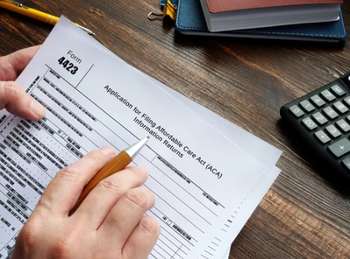
GAO Finds Implementing School Lunch Program Is Tough, But USDA Making Progress
Significantly, GAO made no recommendations on an issue that is one of the more volatile ones in Congress. That doesn't mean there won't be efforts to rein in limits on sodium and other items that make up school lunches, since most of the complaints about a 2010 law have come from districts represented by Republicans.
A
The Healthy, Hunger-Free Kids Act required USDA to update nutrition standards for school lunches, to align with 2010 Dietary Guidelines for Americans as well as Michelle Obama’s focus on reversing trends of childhood obesity. The law also set standards for school breakfasts, which are being served in more schools, as well as so-called “competitive foods,” which are items sold out of vending machines and other campus locations that are not part of the official school lunch. At many schools, these items are sold for a profit to create revenue streams for items not supported by taxpayers.
The GAO found that that 1.4 million children, or 4.5%, dropped out of the school lunch program nationwide between the 2010-2011 school year and 2013-2014, which is consistent with the reports from districts that the new standards caused abandonment of cafeterias. Participation of enrolled children declined from 62% to 58%; numerous press reports suggest that this trend has not been uniform, as urban children have stuck with the school lunch program while children in wealthier districts have fled in larger numbers. As these children are more likely to live in areas represented by Republican members of Congress, backlash against the changes to the lunch program has been heated, with the Congress seeking to reverse tenets of the 2010 law. It hasn’t helped that the School Nutrition Association, which endorsed the original law, has reversed course and fired the lobbyist that helped guide it to passage.
Thus, GAO’s decision to make no recommendations, as USDA is making progress in getting kids to come back to the cafeteria line, comes as something of a surprise. GAO reviewed USDA’s efforts in 8 states, where the federal agency is working with school food authorities to counsel schools on meal plans and take other steps to address “plate waste,” the term for children taking the required food items but throwing them away. The 2010 law requires children to take at least one half-cup of fruits or vegetables for the lunch to be reimbursable, even if the child has no intention of eating that item. USDA regulations also have minimum and maximum calorie limits, limits on salt and saturated fat, and other restrictions.
GAO found that over time, plate waste is declining. That’s what nutrition experts predicted: children unaccustomed to eating fruits and vegetables would resist them at first but would slowly acclimate to the new menu.
The GAO said that USDA reports challenges remain, and this is the source of Congress’ scrutiny. New requirements to further reduce sodium and additional rules for competitive foods have school districts concerned that there will be more waste and a reversal of hard-won gains. USDA plans to phase in these rules over the next 8 years. Four school food authorities and 2 school groups that sell competitive foods reported decreased revenues due to lower demand for products that meet the new requirements. This is also consistent with news reports, especially from suburban districts where children have more options to bring meals from home or leave campus for lunch, depending on local policy. USDA reports it is working with the food industry on the sodium requirements and that it has required school food authorities to add the competitive food category to its periodic reviews.
School district officials say it’s been challenging to keep current with all USDA’s directives—more than 4700 pages’ worth—but the agency responds that most of the hard work has been done and there should be fewer changes going forward. But school officials do report that USDA has been helpful and the agency’s assistance has improved over time. In the future, USDA plans webinars and other teaching efforts to share best practices on how to plan menus that follow the law but also get kids to eat the food.
None of this means Congress is staying out of the fray. It’s been weighing in on the report from the 2015 Dietary Guidelines Advisory Committee ahead of the final guidelines, set to be published by the end of the year.
Newsletter
Stay ahead of policy, cost, and value—subscribe to AJMC for expert insights at the intersection of clinical care and health economics.









































